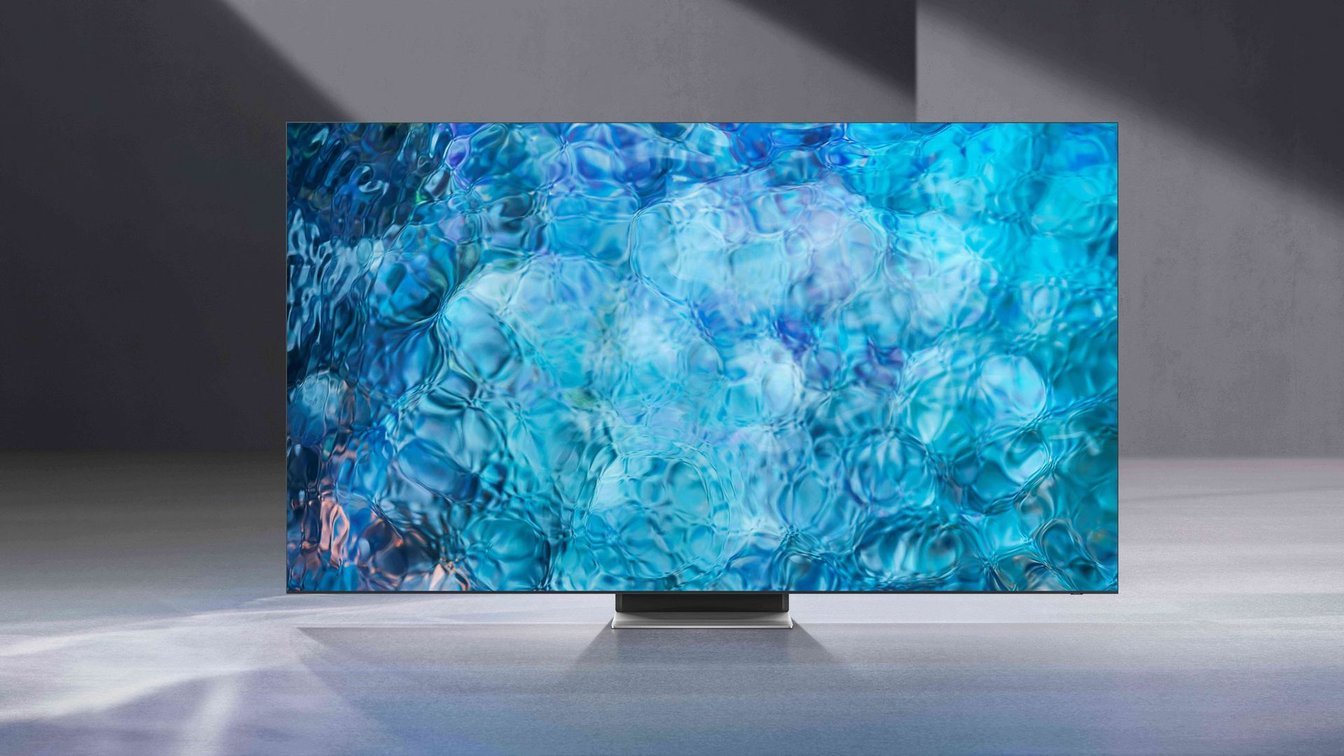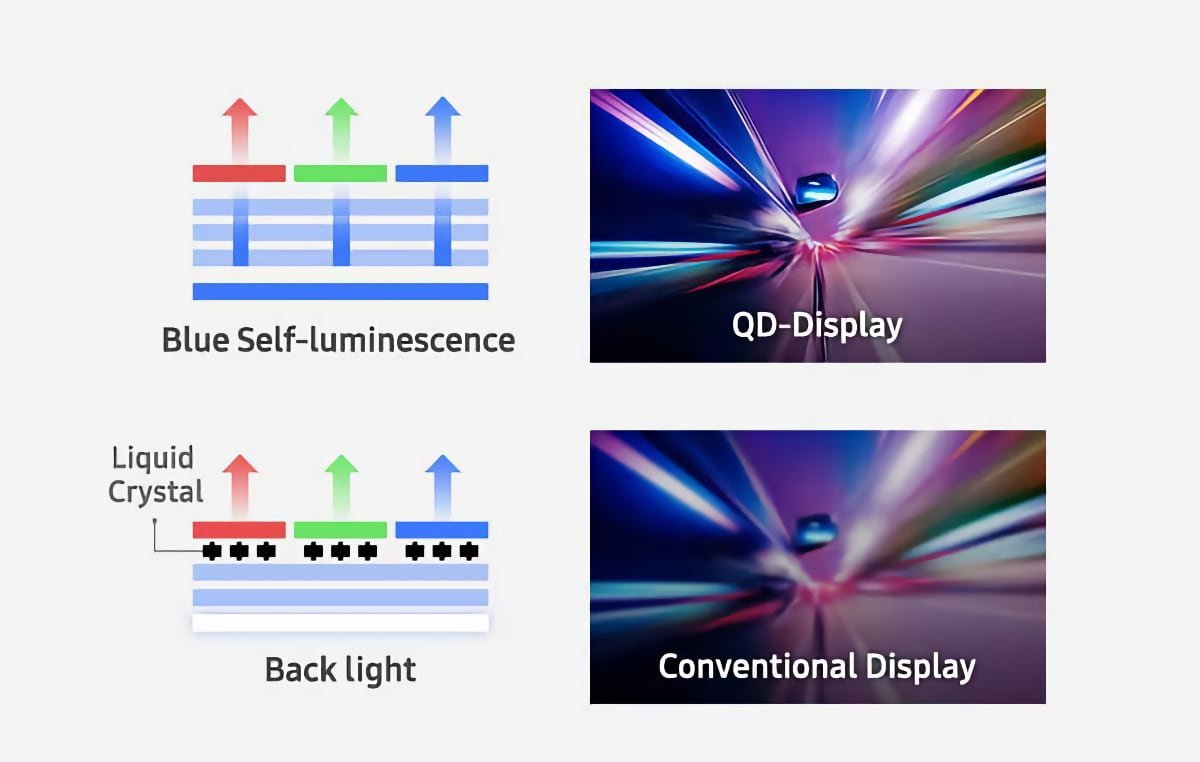Samsung Display only recently entered the OLED TV panel market with its QD-OLED displays, but there are signs that the company could be about to throw in the towel and give up on its efforts to compete with LG Display in the large-sized OLED panel industry.

That’s according to a report by OLED-INFO, which notes that the company is facing significant business and technical challenges with its QD-OLED technology. It’s also notable that the company hasn’t yet committed to improving the tech to keep up with LG Display.
The company only began mass producing QD-OLED displays in late 2021, with the first QD-OLED products, such as the Samsung S95B and Sony A95K making their debut in 2022. Those products were well received, rated by industry reviewers as some of the best TVs money could buy, improving on the image quality of LG’s rival WRGB OLED panels.
That initial success apparently convinced Samsung Display to ramp up production of its QD-OLED tech. The company, which originally committed $10.85 billion towards the project in 2019, began increasing its production yields and today it manufactures around 40,000 substrates per month.
But despite these achievements, there are significant questions about the long-term prospects of QD-OLED, and it may well be that Samsung Display is dialing back its interest in advancing the technology.
OLED-INFO noted earlier this month that the company reassigned 500 engineers who were working on large-sized QD-OLED panels, to its small-medium QD-OLED business unit. Samsung Display explained the move, saying it needs to boost its competitiveness in the market for smaller displays, and that may be true. But it also means it considers the large-sized QD-OLED panel business a lower priority.
Technical Challenges
It should also be pointed out that Samsung hasn’t committed to expanding QD-OLED production since its first major expansion in late 2022. It isn’t clear why, but OLED-INFO points to some technical challenges as a possible reason. It explains that QD-OLED panels have quite a complicated structure that’s reliant on blue-emitters covered with quantum dots for color conversion. The process of depositing QDs on these blue OLED emitters is exceptionally difficult, with Samsung Display previously revealing it has struggled with limitations in deposition density.
This reliance on blue emitters has been seen by analysts as a vulnerability for the company, as the industry is yet to develop highly efficient blue emitters. So instead, Samsung’s approach involves stacking three blue OLED emitter layers on top of each other, which makes the manufacturing process much more complicated than it should be.

The company seemed to have placed its hopes in UDC, which has designed a superior, more efficient blue OLED emitter. But although UDC had originally aimed to make those blue emitters available this year, the latest reports say their introduction has been delayed until at least the second half of next year. Those emitters will also have shorter lifetimes than expected. All of this means Samsung Display has to delay the introduction of a single Blue emitter layer for its QD-OLED tech.
Business Pressures
It has also been suggested Samsung Electronics, which is a different entity to Samsung Display, is not that keen on QD-OLED. Prior to QD-OLEDs launch, it was said that Samsung Electronics originally resisted buying QD-OLED panels for its own TVs, and although it was later convinced to do so, it has recently signed a multi-million dollar contract with LG Display to procure WRGB OLED panels. In addition, Samsung has always declined to specify its QD-OLED TVs as such, instead referring to them simply as “OLED” TVs.
Another problem for Samsung Display is that it has struggled to find customers for its QD-OLED panels besides Samsung itself and Sony. Moreover, there are strong suggestions that QD-OLED will no longer be used in Sony’s flagship TVs this year, giving way to Mini-LED.
Samsung Display has seen more success in the QD-OLED monitor business, but it’s expecting to face much stiffer competition in this area. Its major display making competitors, including BOE, LGD, TCL, CSOT and others, are all racing to build 8.6-Gen AMOLED production lines that will likely manufacture WRGB OLED panels in large numbers, decreasing the costs of those products and putting more pressure on QD-OLED.
It’s not clear if Samsung Display will decide to give up on QD-OLED just yet, but the signs don’t look great. For instance, the company has made no further investment in the technology since it last committed to expanding production in late 2022. Moreover, the company has stated in the past that it only ever saw QD-OLED as a kind of interim premium display technology for large-sized panels, as it believes its real future lies in MicroLED, although that tech is still some years away from being truly commercialized.
OLED-INFO speculates that Samsung Display won’t halt its QD-OLED business yet, but it’s unlikely to make any more significant investments in it, meaning production will likely stay at the same level. Moreover, with LG Display continuing to advance its research into WRGB OLED, that technology may quickly supersede QD-OLED and accelerate its final demise.